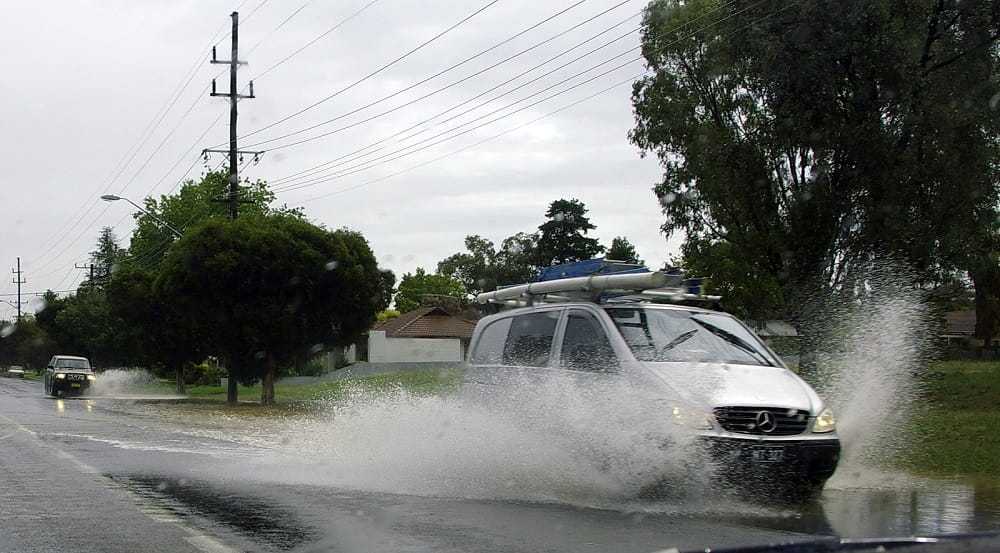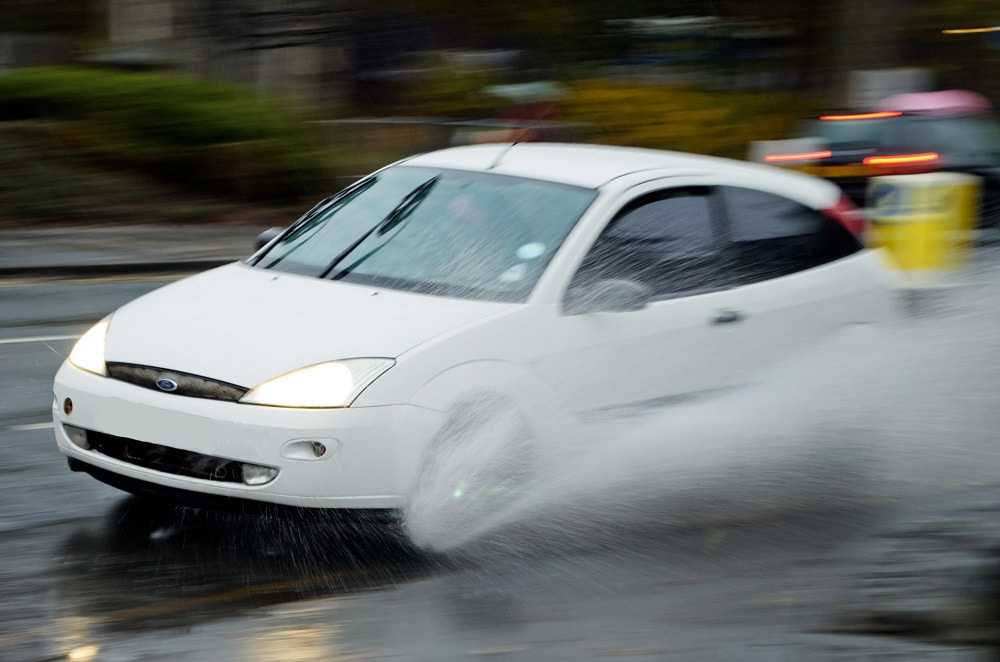There is no such thing as 100% safe driving. Accidents can happen without even doing anything wrong on your part. For example, while riding on a wet road, the tires may slide away even if you drive by the rule book. Hydroplaning is one such phenomenon that causes losing tire traction when driving on a wet road. Besides driving safely, knowing what causes hydroplaning and how to manage it will prevent the occurrence of any mishaps.
Contents
What Causes a Car to Hydroplane?
How does hydroplaning happen? It happens at the time of driving on a waterlogged road. When a layer of water gets between the wheels and the road surface, the tires hydroplane.
This water layer occurs when the tire treads come across more water than they can remove. While speeding over the wet surface, the tires lose traction on the surface due to this water layer. As a result, drivers lose control over steering, leading to the risk of a car crash.

When does hydroplaning occur? Both water puddles and wet roads can cause this problem. You can avoid it by avoiding driving on any watery surface. Taking sharp turns on moist or slippery pavement can also end up with hydroplaning.
Simple Ways to Avoid Hydroplaning
With these precautionary steps, you can stop the cause of hydroplaning.
1. Use tires that have sufficient tread depth
Tires usually come with tread depths that naturally work against losing traction on the road. However, this resistance capability weakens when the tread wears out. To measure the tread depth, check the Tread Wear Indicators (TWI) that looks like narrow stripes along the grooves of the tires.
If your tire tread wears down to 2/32-inch, it is time to get a new tire immediately. Otherwise, your car can lose grip even in light rain.
2. Rotate tires regularly
All car tires do not wear at the same rate. This uneven wearing can happen even on new vehicles. To tackle this problem, rotate the tires at every oil change or after driving 4,000 to 6,000 miles. If you do not change the tires, one side of them may wear down to 2/32-inch sooner than the other side, increasing the risk of sliding away on slippery roads.
3. Use properly inflated tires
Every tire loses its pressure over time, and you cannot drive with underinflated tires. Be careful about underinflation due to tire puncture or temperature fluctuation.
It’s a good practice to examine the pressure once a month. Inflate the tire with the manufacturer’s recommended value. Do not over-inflate them either, as overinflated tires also have a high risk of losing grip.
4. Skip water puddles
Although the latest tire models can resist traction loss, large water puddles can still cause problems. While driving, keep your eyes open for any large water puddles and avoid them.
SEE MORE
- Love Adventures? Drive on These 10 Most Dangerous Roads!
- Does Left-Handed Driving Cause More Accidents?
5. Drive slow when it rains heavily
The risk of skidding increases when you drive at high speeds. Accelerating at 45 mph+ on roads may cause the vehicle to lose control even with as little as 2.5mm deep water. So, when it starts raining, reduce car speed.
Also, following the trails of other cars is a useful technique to stay safe on the road. the vehicles in front of you will displace much of the water, leaving a manageable amount for your vehicle. However, don’t stay too close to another car as it will obstruct the visibility.
6. Avoid longitudinal depressions during raining
Larger vehicles often cause longitudinal depressions on roads that can turn into water puddles by only light rain. You can easily track them down early while driving. Avoid these to ensure your safety.
7. Do not use cruise control
Driving with cruise control is convenient during a long drive, but it does make the drivers less alert about both the car control and the speed. During rain or driving on wet roads, it is better to turn off the cruise control.

What to Do When Your Vehicle Hydroplanes
Despite taking all the precautions, hydroplaning can take place. When this happens, the response of the driver determines whether the situation can be recovered or turn worse.
The best response is to stay calm because hard braking or speeding up out of panic will lead to skidding. If your vehicle starts to change the direction automatically, let off the accelerator but without applying the brake.
Then, you have to steer the car gently in the same direction of skidding. Surprisingly, it will help you regain control of the vehicle. Hold your nerve until the tires get back their grip. Remain vigilant for any other potentially dangerous zones.
Final Words
Hydroplaning is undoubtedly a terrifying event if you are unprepared for it. It is also normal for anyone to panic in such situations. Luckily, this can last for only a few seconds. Keeping calm during that time and dealing with it tactfully will lead you to a quick and safe recovery.



